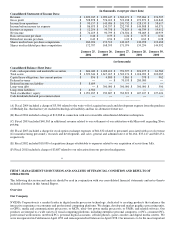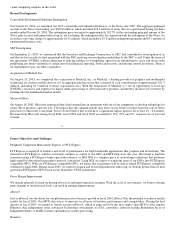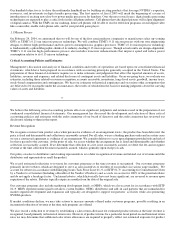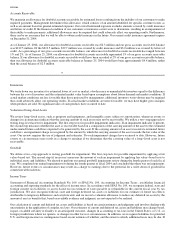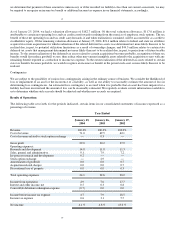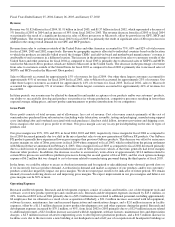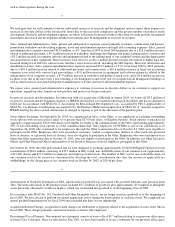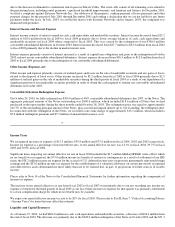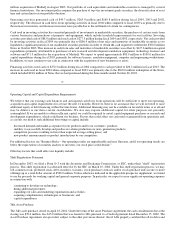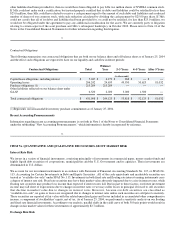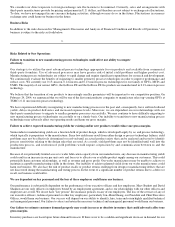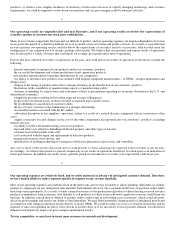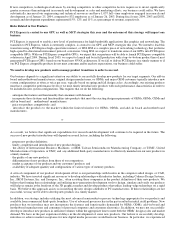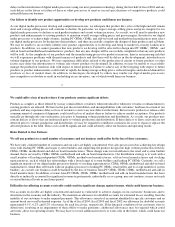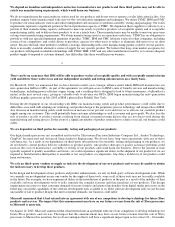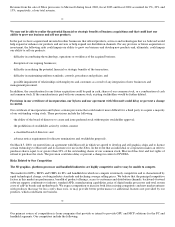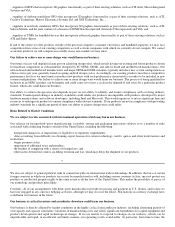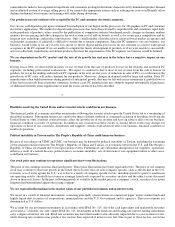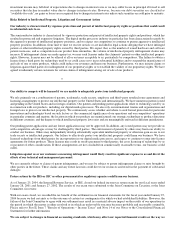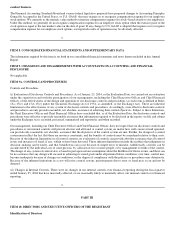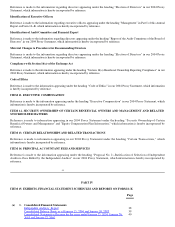NVIDIA 2004 Annual Report Download - page 23
Download and view the complete annual report
Please find page 23 of the 2004 NVIDIA annual report below. You can navigate through the pages in the report by either clicking on the pages listed below, or by using the keyword search tool below to find specific information within the annual report.
We consider our direct exposure to foreign exchange rate fluctuations to be minimal. Currently, sales and arrangements with
third−party manufacturers provide for pricing and payment in U.S. dollars, and therefore are not subject to exchange rate fluctuations.
To date, we have not engaged in any currency hedging activities, although we may do so in the future. Fluctuations in currency
exchange rates could harm our business in the future.
Business Risks
In addition to the risks discussed in "Management's Discussion and Analysis of Financial Condition and Results of Operations," our
business is subject to the risks set forth below.
23
Risks Related to Our Operations
Failure to transition to new manufacturing process technologies could affect our ability to compete
effectively.
Our strategy is to utilize the most advanced process technology appropriate for our products and available from commercial
third−party foundries. Use of advanced processes may have greater risk of initial yield problems and higher product cost.
Manufacturing process technologies are subject to rapid change and require significant expenditures for research and development.
We continuously evaluate the benefits of migrating to smaller geometry process technologies in order to improve performance and
reduce costs. We currently use 0.15−micron, 0.14 micron and 0.13 micron process technologies for our family of GPUs, MCPs and
UMPs. The majority of our newest GPUs, the GeForce FX and the GeForce FX Go products are manufactured in 0.13−micron process
technology.
We believe that the transition of our products to increasingly smaller geometries will be important to our competitive position. On
February 24, 2004, we announced that we will be one of the first semiconductor companies to manufacture select up−coming GPUs at
TSMC's 0.11 um (micron) process technology.
We have experienced difficulty in migrating to new manufacturing processes in the past and, consequently, have suffered reduced
yields, delays in product deliveries and increased expense levels. Moreover, we are dependent on our relationships with our
third−party manufacturers to migrate to smaller geometry processes successfully. We may continue to have difficulty migrating to
new manufacturing process technologies successfully or on a timely basis. Our inability to transition to new manufacturing process
technologies may adversely affect our operating results and harm our gross margins.
Failure to achieve expected manufacturing yields for existing and/or new products would reduce our gross margins.
Semiconductor manufacturing yields are a function both of product design, which is developed largely by us, and process technology,
which typically is proprietary to the manufacturer. Since low yields may result from either design or process technology failures, yield
problems may not be effectively determined or resolved until an actual product exists that can be analyzed and tested to identify
process sensitivities relating to the design rules that are used. As a result, yield problems may not be identified until well into the
production process, and resolution of yield problems would require cooperation by and communication between us and the
manufacturer.
Because of our potentially limited access to wafer fabrication capacity from our manufacturers, any decrease in manufacturing yields
could result in an increase in our per unit costs and force us to allocate our available product supply among our customers. This could
potentially harm customer relationships, as well as revenue and gross profit. Our wafer manufacturers may be unable to achieve or
maintain acceptable manufacturing yields in the future. Our inability to achieve planned yields from our wafer manufacturers could
harm our business. We also face the risk of product recalls or product returns resulting from design or manufacturing defects that are
not discovered during the manufacturing and testing process. In the event of a significant number of product returns due to a defect or
recall, our business could suffer.
We are dependent on key personnel and the loss of these employees could harm our business.
Our performance is substantially dependent on the performance of our executive officers and key employees. Marv Burkett and David
Shannon are our only officers or employees bound by an employment agreement, and so our relationships with our other officers and
employees are at will. We do not have "key person" life insurance policies on any of our employees. The loss of the services of any of
our executive officers, technical personnel or other key employees, particularly Jen−Hsun Huang, our President and Chief Executive
Officer, would harm our business. Our success will depend on our ability to identify, hire, train and retain highly qualified technical
and managerial personnel. Our failure to attract and retain the necessary technical and managerial personnel would harm our business.
Our failure to estimate customer demand properly may result in excess or obsolete inventory that could adversely affect our
gross margins.
Inventory purchases are based upon future demand forecasts. If there were to be a sudden and significant decrease in demand for our


